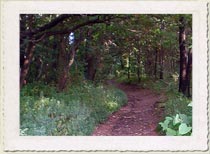
Clove Lake Park Preserve
Borough: Staten Island
Acres: 131
Habitat Type: Forest, Meadow, Salt Marsh, Freshwater Wetland
Clove Lakes Park derives its name from the Dutch word “kloven,” meaning cleft. The particular cleft is the valley and brook between Emerson and Grymes Hills. This valley was deepened by the glacier 20,000 years ago. The brook which ran through the valley originated in Clove Swamp and ran to the Kill Van Kull. The damming of this brook over the years created the different lakes and ponds in the area.
The northwest section of the park is home to Staten Island’s largest living thing, a tulip tree (Liriodendron tulipifera). One-hundred-and-seven-feet tall and at least three hundred years old, this tree survived the extensive logging and clearing which occurred when the settlers came. Tulip Trees are known for their straight trunks from which Native Americans carved canoes.
Also of interest in Clove Lakes Park are the outcroppings of serpentine rock at the crest of the hills. The spine of Staten Island is a broad ridge of serpentine, which was formed during the Ordovician period (435-500 million years ago) when heat and pressure altered rocks rich in magnesium and iron. Ash green in color, serpentine is named after the patterns in the rock that resemble snake skin. Its mineral composition includes fibrous chrysotile (known commercially as asbestos), talc, oluvine (green lava grains) as well as ferromagnesia, a mineral containing magnesium and iron.
Photographs
Directions
Public Transit: From ferry, take the S62 bus to Park entrance at intersection of Victory Boulevard and Clove Road (about 20 minutes).
By Car: Take the Verrazano Bridge to the S.I. Expressway (Route 278) to exit 13 (Richmond/Clove Roads). Take a right on Clove Road. Park entrance at intersection of Victory Boulevard and Clove Road.



